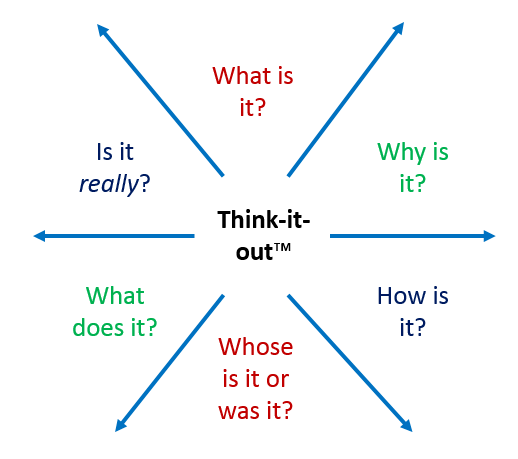For some time now, here at the Extraordinary Learning Foundation™, we have been working on Actionizing Thinkiness. This is why we developed the Think-it-out™ toolkit. We have been working with teachers to help engage more thinking in their otherwise thought-free lessons.

However, we have encountered a problem. Teachers typically use the toolkit to direct questions to students in class. In other words, the teacher maintains complete control over the learning episode. This is self-evidently undesirable so we wondered whether we could develop a model of co-deliveracy that was authentic, engaging and allowed learners to take control of the thinkiness.
This is the thinking behind the thinking that led to us thinking-up the idea of Thinkiballs™.
Mace Jakins is a fifth grade social studies teacher at Benington International School, UA. His chestnut hair shines as he describes the process of working with one of our Extraordinary Learning Foundation™ Associates on developing a pedagogy of Thinkiness that was also a pedagogy of authenticity and respect.
“We had the idea of writing out the Think-it-out questions on pieces of paper and then screwing these up into balls,” Mace explains.
“Each learner gets a ball but they don’t know what’s on it. At any point in the lesson a learner may shout ‘THINKIBALLS!’ and throw their ball at another student or the teacher who then has to unscrew it and answer the question.”
Mace takes a gulp of his double soy macchiato and pauses. He eyes glisten moistly as he continues.
“At first my control freak side came out. I just couldn’t bear the idea that the lesson could go off track or an important concept might be interrupted. When you’re teaching the skill of empathy then you often have to develop it over time. I remember the learners co-creating a personal response to a diary entry of a refugee visiting the local library for the first time. We had three ‘THINKIBALLS!’ in a row right at the start of that and I thought we’d never get going.”
So I asked Mace how he moved past that.
“I started to realise that I had given my learners voice and choice. They were telling me something and I needed to listen. I started to realise that this was bona fide authentic learning that is real and extant. I started to realise that this was where it was at: that this was the shizzle: that this was Thinkiballs!”
Pingback: A new report on ‘metacognition and self-regulated learning’: What does it mean? – Filling the pail